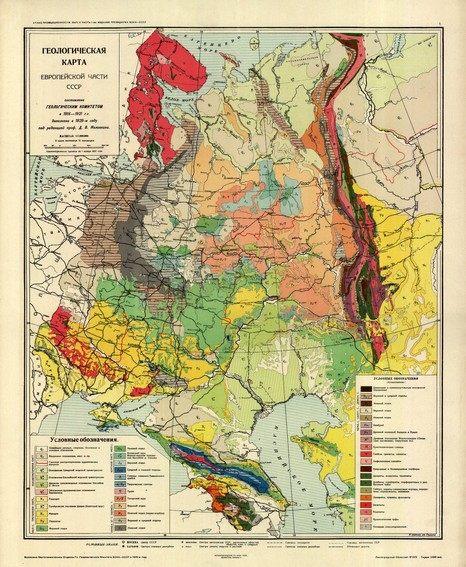1918 – GeolCom was transferred to the Supreme Council of National Economy (VSNKh); field work expanded, organization of regional branches began. The Geological Committee was gaining more and more authority, VSNKh called it central and represented the exclusive right to organize local geological institutions and approve their plans. A.D. Arkhangelsky, I.M. Gubkin, A.N. Zavaritsky, V.K. Kotulsky, A.G. Rzhonsnitsky, P.I. Stepanov and other GeolCom employees continued geological exploration, important for the needs of the Republic of Soviets, whose government believed that “no money should be spared” for this research.
GeolCom directors during this period were: V.N. Veber (1917–1918), A.K. Meister (1918-1921), A.N. Ryabinin (1921-1923), N.N. Yakovlev (last elected GeolCom Director, 1923-1926), D.I. Mushketov (1926-1929), I.I. Radchenko (1929).
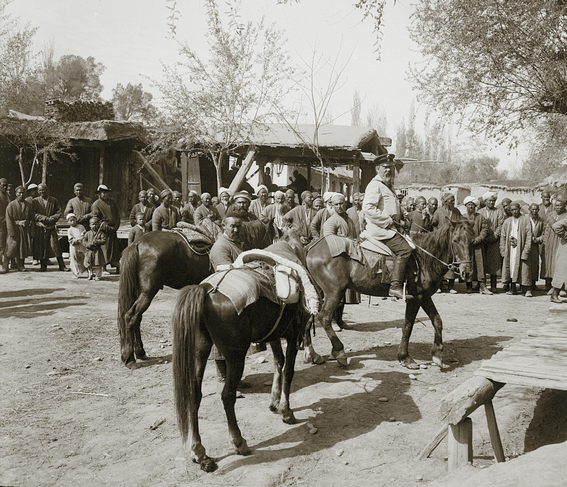
1918-1923 – Despite the civil war, occupation of a number of areas, and the country's difficult situation, GeolCom activity continued. At this time, even the expansion of field work took place: S.V. Obruchev’ s expedition discovered the Tunguska coal basin; N.N. Urvantsev’s expedition began the study of the Yenisei territories in Siberia; V.I. Yavorsky, P.I. Butov and others evaluated the industrial importance of the Minusinsk coal basin; V.K. Kotulsky, I.F. Grigoriev. V.P. Nekhoroshev, N.N. Kurek and others evaluated the prospects of the Rudny Altai.
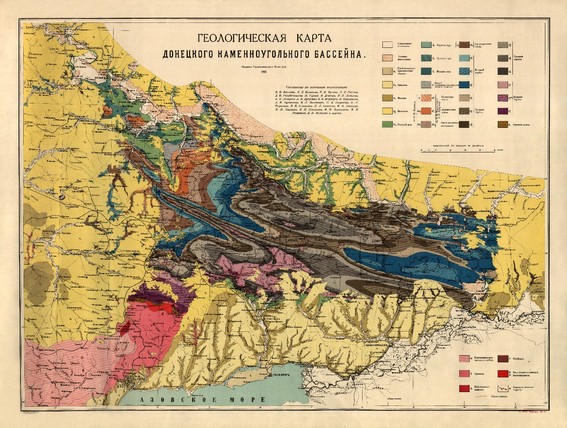
GeolCom together with the Academy of Sciences prepared 44 issues of "Mineral Resources", a complete summary of the country's mineral resources. This work performed by K.I. Bogdanovich, V.N. Veber, D.V. Golubyatnikov, N.K. Vysotsky, V.K. Kotulsky, A.A. Krasnopolsky and others, has become a real encyclopedia of mineral resources of Russia.
1922 – From June 1 to June 13, the 1st All-Russian Congress of Geologists (290 delegates) was held in GeolCom building. It was opened with a keynote address by A.N. Ryabinin "Organization of the geological survey in Russia and coordination of various state geological institutions". The congress emphasized the national importance of the geological map of the country as a necessary basis for solving practical economic problems, the need for a wide publication of materials on mineral deposits of the country. The Supreme Council of National Economy of the USSR defined GeolCom as an institution organizing and regulating all geological research and exploration of national importance.
The first geological map of the Asian part of Russia was published at 1:10 500,000 scale (250 versts per inch).
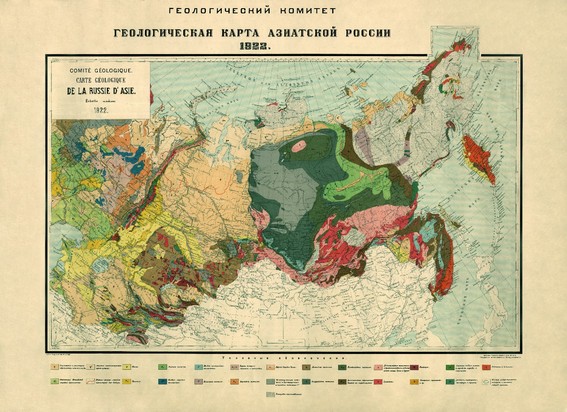
1926 – at the 1st All-Union Mining Scientific and Technical Congress, GeolCom made problematic reports, “The degree of knowledge of the USSR’s subsurface” and “The degree of supply of the USSR with mineral resources”, summing up the work of the Bureau of Accounting for Minerals of GeolCom headed by N.I. Berling.
In the 1920s, the Geological Committee, despite the difficulties of the post-war period, conducted field work and geological surveys in many areas. The twenties were the years of exceptional achievements in expanding the raw material base of the Soviet state. Substantiated scientific forecasts of GeolCom geologists have provided the discovery and development of many large mineral deposits in the European part (bauxites in the Tikhvin region, M.M. Vasilievsky and S.F. Malyavkin; oil shales of the Estonian basin, N.F. Pogrebov), in the Urals (bituminous coals in the Pechora River basin – discovery of the Pechora coal basin, A. A. Chernov; potassium and magnesium salts in the region of Solikamsk, oil – Chusovaya Gorodki, P.I. Preobrazhensky), in Taimyr (sulphide copper-nickel ores with platinum Norilsk 1, N.N. Urvantsev); in the Caucasus (Dashkesan iron ore deposit, N.K. Paffengolts; Kajaran - copper-molybdenum ore, V.G. Grushev); in Kazakhstan (coal from the Karaganda coal basin, A. A. Gapeev; molybdenum-copper-porphyry deposit Kounrad, M.P. Rusakov; corundum deposit Semiz-Bugu, N.N. Nakovnik); in Transbaikalia (Khapcheranga tin ore deposit, S.S. Smirnov). The first Kolyma expedition of GeolCom headed by Yu.A. Bilibin marked the beginning of the discovery of major gold province, the main supplier of gold in the country.
Balkhash, Bilibino, Boksitogorsk, Dzhezkazgan, Karaganda, Kemerovo, Leninogorsk, Leninsk-Kuznetsky, Magadan, Neftekamsk, Norilsk, Prokopyevsk, Semiz-Bugu, Slantsy, Solikamsk, Temirtau and many other towns and villages owe their birth and development to GeolCom discoveries of the 20s.
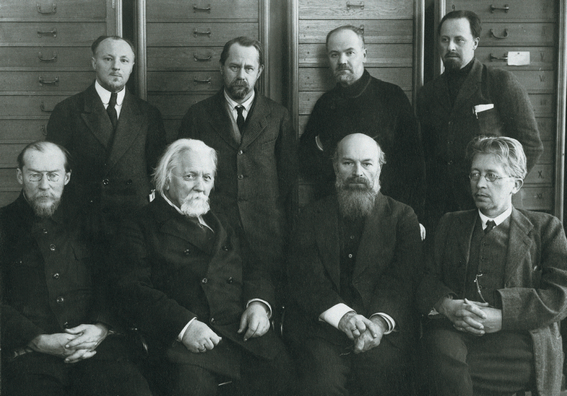
During these years, the foundation was laid for the creation of a stratigraphic and petrographic base of geological works, including geological surveying, prospecting and exploration of mineral deposits. GeolCom Director N.N. Yakovlev in his keynote address at the annual meeting of the Scientific Council on January 31, 1926, formulated the concept of a rational combination of practical work and theoretical research in geology, in which he proved the exceptional harm to the point of view on the significance in geology of practical results only. The importance of this speech can be hardly overestimated. GeolCom and subsequently VSEGEI work has always been a rational combination of research in both theoretical and practical geology. It was this that became the blessed basis for the emergence and development of many national geological schools and areas that have gained worldwide recognition.
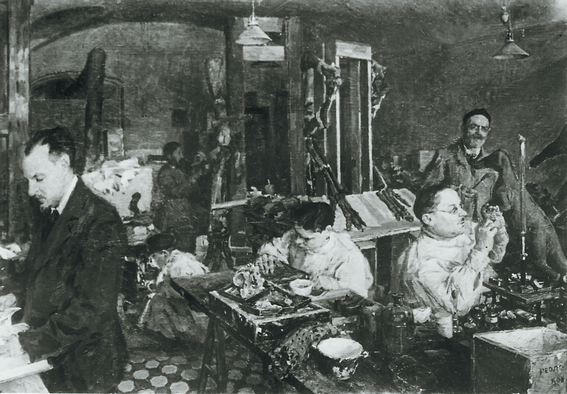
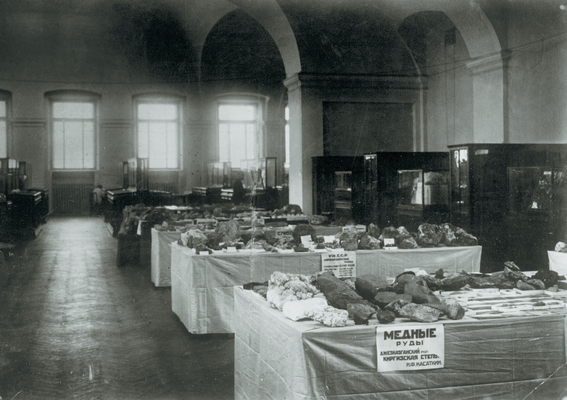
Geological Committee consolidated its position as the organizational and regulatory centre of the state geological survey and at the same time the central integrated geological scientific institution. The question arose about the division of the Geological Committee functions into scientific and administrative.
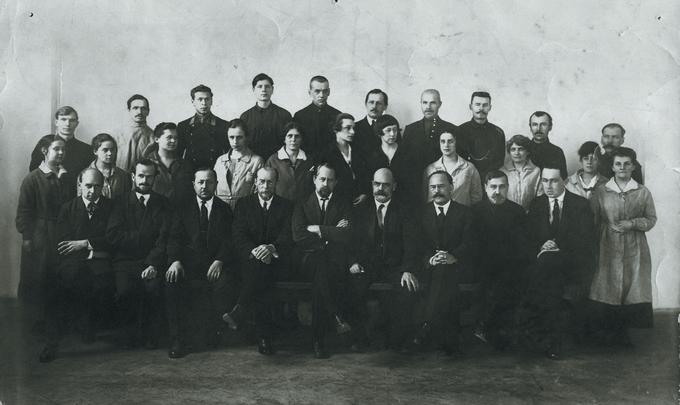
1929 – reorganization of GeolCom into the Main Geological Administration under the Presidium of the Supreme Council of National Economy and creation on the basis of scientific departments of geological exploration institutes in the mining industry: for non-ferrous metals (director V.K. Kotulsky), ferrous metals (N.I. Svitalsky), coal (M. M. Prigorovsky), oil (S.I. Mironov), non-metallic minerals (S.F. Malyavkin), hydrogeology (G.Ya. Vasiliev). The Geophysical Institute was organized (A.A. Petrovsky). In 1930, GeolCom, being in an abbreviated composition, was renamed the Institute of the Geological Map (director D.V. Nalivkin).
